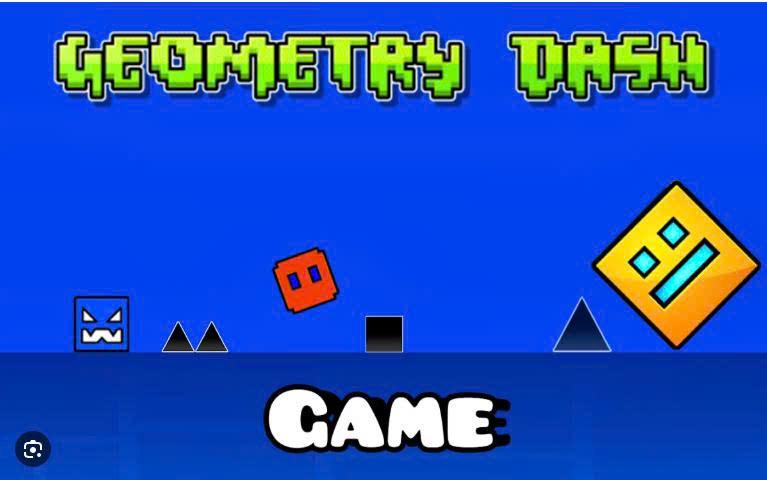Mastering the Art of the Perfect Geometry Jump

If you've ever found yourself frantically tapping your screen or spacebar while a cube bounces through a neon-colored obstacle course, you know exactly what makes geometry-based platformers so addictively challenging. There's something almost magical about the precision required to navigate through seemingly impossible levels, where timing is everything and one mistimed jump can send you back to square one.
At the heart of this genre lies Geometry Dash, a game that has captured the attention of millions of players worldwide with its deceptively simple concept: jump, fly, and flip your way through dangerous passages and spiky obstacles. But don't let the straightforward premise fool you – mastering the geometry jump is an art form that combines rhythm, reflexes, and remarkable patience.
Understanding the Core Gameplay
The beauty of Geometry Dash lies in its elegant simplicity. You control a small geometric shape – usually starting as a cube – that automatically moves forward through each level. Your only job? Don't crash into anything. Sounds easy enough, right? Well, that's where the game gets deliciously tricky.
The basic mechanics revolve around a single input: tap to jump. Whether you're playing on mobile with touch controls or on PC with your spacebar, this one action controls your destiny. But as you progress through the levels, your simple cube transforms into different forms – a ship that flies up and down, a ball that can roll on ceilings, or a wave that moves in a smooth sine pattern.
Each transformation brings its own physics and challenges. When you're in ship mode, holding down makes you fly upward, while releasing sends you downward. The ball form flips gravity with each tap, letting you roll along floors and ceilings. Meanwhile, the wave mode requires you to carefully control your vertical position through tight spaces.
What makes these mechanics truly shine is how they sync with the music. Every level in Geometry Dash is carefully crafted to match its soundtrack, creating a rhythm game disguised as a platformer. The beats often hint at when you need to jump, making successful runs feel like you're conducting a geometric orchestra.
The visual design reinforces this musical connection perfectly. Bright, pulsing colors flash in time with the beat, while obstacles and platforms seem to dance along with the rhythm. This audio-visual synchronization isn't just eye candy – it's a crucial gameplay element that separates good players from great ones.
Essential Tips for Geometry Jump Success
Getting good at geometry jumping requires more than just quick reflexes. Here are some strategies that can transform you from a frustrated beginner into a confident level-crusher:
Listen to the Music First
Before attempting a level seriously, play it once just to hear the soundtrack. Don't worry about completing it – focus on how the music flows and where the natural rhythm suggests jumps should occur. Many experienced players can almost "feel" where the next obstacle will be based on the musical cues alone.
Practice Mode is Your Friend
Don't be too proud to use practice mode. This feature lets you place checkpoints throughout a level, making it possible to master difficult sections without replaying the entire level each time. It's especially valuable for learning the timing of tricky sequences or getting comfortable with form transitions.
Master Each Form Individually
Spend time in levels that focus on specific gameplay modes. Get comfortable with how the ship handles before tackling levels that rapidly switch between cube and ship modes. Understanding the physics of each form will make the transitions feel natural rather than jarring.
Watch Your Anticipation
One of the most common mistakes is jumping too early or too late because you're either rushing ahead mentally or reacting too slowly to what you see. Try to find that sweet spot where you're anticipating obstacles without getting ahead of yourself.
Embrace the Retry
Geometry Dash can be brutally unforgiving, and some levels might take hundreds of attempts to complete. The key is viewing each failure as a learning opportunity rather than a setback. Notice what went wrong, adjust your timing, and try again. The satisfaction of finally completing a challenging level is worth every retry.
Start with User-Generated Content Carefully
While the community-created levels offer incredible variety and creativity, some can be significantly harder than the main levels. If you're getting frustrated, step back to the official levels to build your skills before tackling the most challenging user-created content.
Focus on Consistency
Rather than trying to rush through levels, focus on developing consistent timing and smooth inputs. Jerky, panicked movements usually lead to crashes, while steady, rhythmic play often leads to success.
The Rhythm of Success
What makes geometry jumping truly special isn't just the challenge – it's the unique flow state you enter when everything clicks. There's a meditative quality to successful runs where your fingers move almost automatically to the beat, your eyes track upcoming obstacles naturally, and your geometric avatar dances through the level with mechanical precision.
This is what keeps players coming back, attempt after attempt. It's not just about reaching the end of the level; it's about achieving that perfect harmony between player, music, and geometry. Whether you're navigating the beginner-friendly levels or attempting the community's most diabolical creations, remember that every expert was once a beginner who refused to give up.
So grab your device, crank up the volume, and prepare for a journey that's equal parts frustrating and rewarding. The geometry jump awaits, and with patience and practice, you'll soon be bouncing through those neon obstacles like a pro.
- Art
- Causes
- Crafts
- Dance
- Drinks
- Film
- Fitness
- Food
- Games
- Gardening
- Health
- Home
- Literature
- Music
- Networking
- Other
- Party
- Religion
- Shopping
- Sports
- Theater
- Wellness


